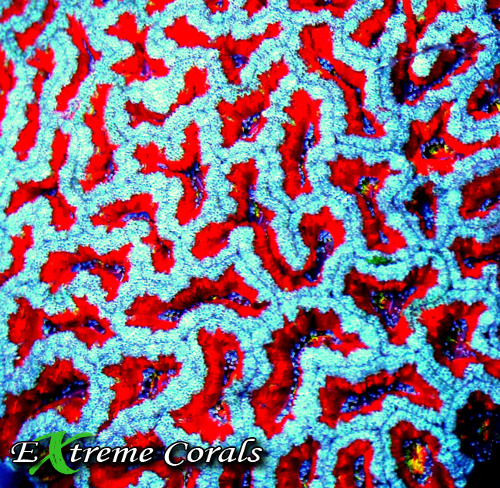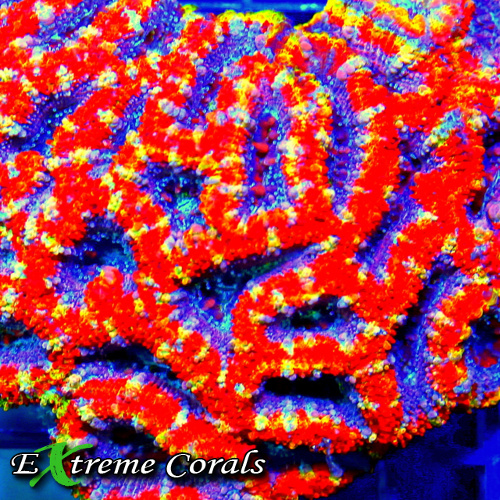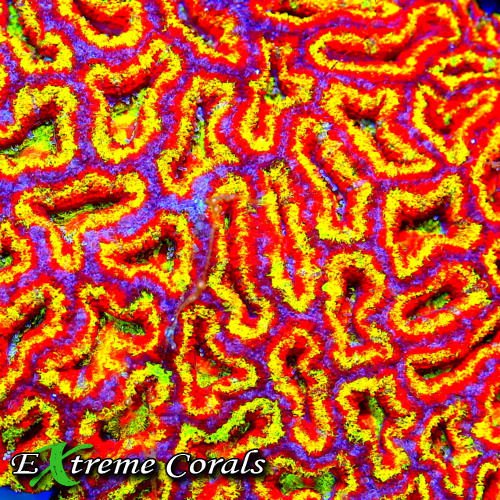Extreme Corals News and Updates
Guide to Caring for Acanthastrea Corals: Tips and Scientific Insights
Essential Tips, Feeding Practices, and Ailment Treatments for Vibrant and Healthy Acans
Discover the ultimate guide to caring for Acanthastrea corals with essential tips on environment setup, feeding practices, and treating common ailments, supported by scientific research.
by scott Shiles • June 14, 2024
Introduction to Acanthastrea Corals
Acanthastrea corals, affectionately known as "Acans," are beloved by both beginner and experienced reef keepers. These vibrant, resilient corals are part of the Large Polyp Stony (LPS) coral family. Their striking colors and hardy nature make them an excellent and eye-catching addition to any reef aquarium.
Choosing the Right Environment for Acanthastrea Corals
Creating a suitable environment for your Acanthastrea corals is key to their well-being. Here’s how to do it:
- Light Conditions: Acans thrive under moderate to high light. Ensure your tank provides the right light intensity to keep them vibrant.
- Water Parameters: Maintain stable temperature, salinity, and pH levels to prevent stress. Fluctuations can harm your corals.
- Tank Mates: Position Acans away from aggressive neighbors to avoid damage and encourage healthy growth.
- Water Flow: Moderate water flow mimics their natural habitat and helps prevent sediment buildup around the corals.
- Water Quality: Regularly monitor and maintain water quality to support their health and maintain their bright colors.
Proper Feeding Practices for Acanthastrea Corals

A varied diet is crucial for the health and growth of Acanthastrea corals. Here’s how to feed them effectively:
- Feeding Frequency: Feed small amounts multiple times a week. This prevents overfeeding and maintains water quality.
- Nutrient-Rich Food: Use quality coral food with a mix of proteins, fatty acids, and vitamins.
- Target Feeding: Individually target feed each coral to ensure they all get enough nutrition.
- Feeding Schedule: Corals mainly feed during the day. Avoid feeding them at night.
- Observation: Watch their response to feeding to fine-tune your schedule as needed.
Avoiding Overhandling and Overfeeding Acanthastrea Corals
Gentleness is key when caring for Acanthastrea corals. Here are some important tips:
- Handling: Excessive touching can stress the corals and cause tissue damage. Be gentle and minimize physical interaction.
- Feeding Balance: Overfeeding can lead to nutrient imbalances and algal growth. Maintain a balanced feeding schedule to keep them healthy.
Identifying and Treating Common Ailments in Acanthastrea Corals
Staying vigilant and proactive can help you address common coral ailments effectively:
- Rapid Tissue Necrosis (RTN): This condition causes rapid tissue loss. Remove the affected coral promptly and quarantine it to prevent the spread.
- Brown Jelly Disease: Look for brown, jelly-like substances on your coral. Remove infected parts quickly and ensure good water quality to stop further spread.
- Bleaching: Stress from light, temperature, or water quality changes can cause bleaching. Adjust these factors to promote recovery.
- Parasitic Infestations: Watch out for flatworms or nudibranchs. Use appropriate treatments to eliminate these pests.
- Physical Damage: Accidental bumps or scrapes can injure your corals. Handle them with care and provide a clean environment for healing.
Tips for Successful Acanthastrea Coral Care

To ensure your Acanthastrea corals thrive, remember these key points:
- Lighting and Water Flow: Provide proper lighting and adequate water flow.
- Stable Parameters: Maintain stable temperature, salinity, and pH levels.
- Avoid Overcrowding: Prevent competition for space and resources by not overcrowding your tank.
- Regular Monitoring: Observe and monitor your corals for any signs of distress or disease.
- Careful Acclimation: Avoid sudden changes in water conditions and acclimate new corals carefully.
Scientific Research and References
- Light and Temperature Effects: Studies like "Light and Temperature Effects on Coral Physiology" by Jones et al. (2020) explore how these factors impact coral health.
- Coral Nutrition: Research on feeding practices, such as "Nutrition and Feeding of Coral Species" by Thompson et al. (2018), provides insights into maintaining coral health.
- Coral Diseases: "Coral Diseases: Causes and Treatments" by Smith and Doe (2019) discusses common ailments and their treatments.
- Parasitic Threats: The study "Parasitic Threats to Coral Reefs" by Williams and Brown (2021) covers parasitic infestations and their management.
- Coral Resilience: "Coral Resilience and Regeneration" by Miller et al. (2017) examines the effects of physical damage and coral recovery processes.
With these tips and insights, you can successfully care for your Acanthastrea corals, ensuring they remain healthy and vibrant in your reef aquarium.

